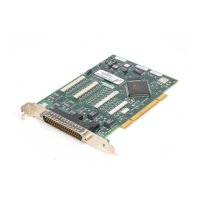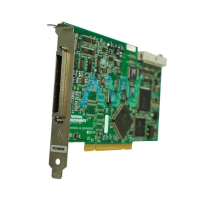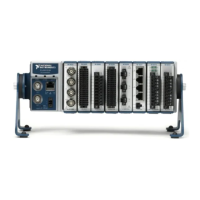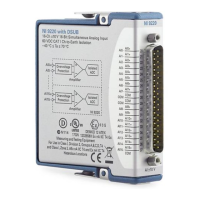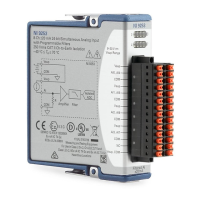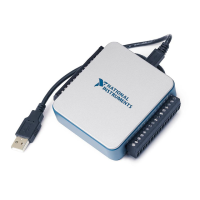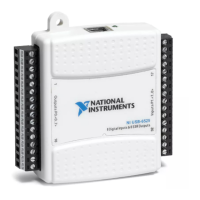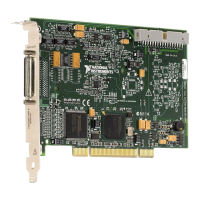4-10 | ni.com
Chapter 4 Analog Input
If data cannot be transferred across the bus fast enough, the FIFO becomes full. New
acquisitions overwrite data in the FIFO before it can be transferred to host memory.
The device generates an error in this case. With continuous operations, if the user
program does not read data out of the PC buffer fast enough to keep up with the data
transfer, the buffer could reach an overflow condition, causing an error to be
generated.
• Non-buffered—In non-buffered acquisitions, data is read directly from the FIFO on the
device. Typically, hardware-timed, non-buffered operations are used to read single samples
with known time increments between them.
Note (NI USB-62xx Devices) USB M Series devices do not support non-buffered
hardware-timed operations.
Analog Input Triggering
Analog input supports three different triggering actions:
• Start trigger
• Reference trigger
• Pause trigger
Refer to the
AI Start Trigger Signal, AI Reference Trigger Signal, and AI Pause Trigger Signal
sections for information about these triggers.
An analog or digital trigger can initiate these actions. All M Series devices support digital
triggering, but some do not support analog triggering. To find your device triggering options,
refer to the specifications document for your device.
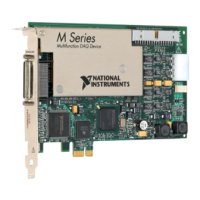
